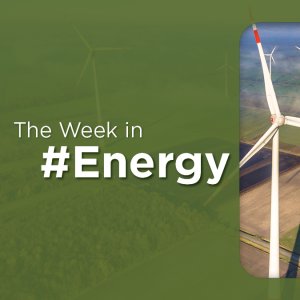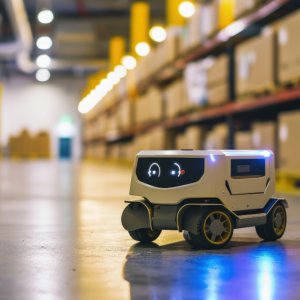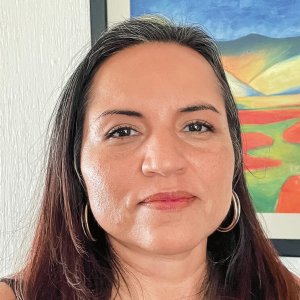
What Impact Is the Internet of Things and Big Data Tech Having?
Mining technology has come a long way since the days when canaries were sent down the shaft to warn workers of carbon monoxide leaks. A few years ago, concepts like Big Data and Industry 4.0 were seen by miners as gimmicky, expensive and impractical. But today the digital revolution is sweeping through the industry, paving a way toward greater efficiency throughout mining operations and forcing executives to rethink their technological strategies. Mexico Mining Review asked a range of industry players for their opinion on how digitalization is shaping the mining sector both locally and on a global scale.
Paul St. Onge
All of our key solutions, including Downhole Navigation, Structural Geology, Infield Geo-analysis, Driller Operable Geophysics and Drilling Optimization, have the awardwinning cloud-based IMDEXHUB-IQ at the heart of the solution, offering real-time secure data access to field data. Clients benefit from an enhanced chain of custody, quality data, timeliness of information and streamlined processes. We believe the future of mining is about automation, collaboration and real-time information. We see this continuing to play a key part in the future of mining operations in areas of exploration through to mineral processing operations.

Felipe Rivera
The Telecommunications Reform will help the mining industry become better connected to the Internet and the Internet of Things (IoT). This is especially important considering that the mining industry tends to work in isolated areas. We develop technology that enables the industry to be less centralized in terms of information accessibility through the IoT and helps operators make better on-the-spot decisions.
The way we operate mines today is vastly different from the way they were operated 20 years ago, and it will continue to change. Transformation is inevitable but it does not necessary imply a massive loss of jobs; it simply means that the way people work in mines will change. It is similar to the entrance of computers in the workplace, which increased production rates and changed the dynamic of the labor force.

Scott Philips
The industry acknowledges that digital technology and the use of information is an effective way to understand and analyze ore bodies, drilling blast cycles and excavation procedures. This technology can determine the quality of an ore body, and can also facilitate adjusting the quantity of energy and water needed in an operation.
The idea is to use technology to acquire information and insert it into a platform to analyze it. It is a way to provide mining customers data in real time so they can adjust quickly. We have an opportunity to help solve these challenges in the mining sector. We want to connect the entire industrial ecosystem and unlock productivity potential. Influencing productivity by at least 1-3 percent implies thousands of dollars for our customers. The idea is to become more productive and cost-efficient.

Eduardo Salgado
Companies need to always keep in mind the reduction of operative costs, which is one of the few things they have complete control over and promotes a higher return on investment. Given that there are not enough resources to increase exploration investment, companies find themselves with even less capital to invest in technology. This information can be a great area of opportunity for companies that want to get ahead of the pack.
Any company that dares to defy the current benchmark and prioritize digitalization can acquire a considerable jump start by starting to incorporate digitalized equipment. Each phase of a mine cycle has different needs but one of the best ways to optimize costs is to digitalize the mineral handling processes.

Javier Barella
The Internet of Things can mean several things, and if you ask 100 people for a definition you will receive 100 different responses. Essentially, the Internet of Things is a great connector. It connects assets, personal resources and companies.
The idea is to create a unified network to enable companies to monitor all resources in one place. The IoT enables us to gather larger quantities of data, and when this happens, the user has so many more opportunities for improvement. The user stops working on ideas and premonitions, but hard facts. In the mining sector, operators now have several opportunities to make their operations more efficient.

Gerardo Gardea
Around 10 years ago, many observers thought the radiocommunication industry was on the verge of collapse but unified communications have brought it back to the forefront of mine operations. Previously, radiocommunication was used exclusively for sending messages between specific operating teams but now these messages can be transmitted across various mediums including mobile phones, tablets and any other device that has access to Wi-Fi. The user simply has to download an app, which is widely accessible, and then connect to the other members of the team. This means that workers in any mine in the world can communicate with each other via radio, which generates huge savings in terms of time for the user. This technology also represents a step forward in terms of mine security because every worker can be located using an indoor GPS system.

Álvaro Rendón
Imagine a scenario where all suppliers are able to define, in real time, the adjustments or improvements they must make to their product to send to the customer. The firmness of each section of a mill’s internal linings, for example, can be adjusted based on the different waste generated by each section, so that the new batch will achieve a more uniform wear. Furthermore, a connected service from this supplier could alert the mechanical or process area that some equipment is operating outside its specifications, registering events where coatings could suffer greater wear.
With a connected service, miners would move from a reactive relationship where explanation for a malfunction is found in previous experience to a preventive relationship where the product lifecycle in the equipment can be predicted.
















